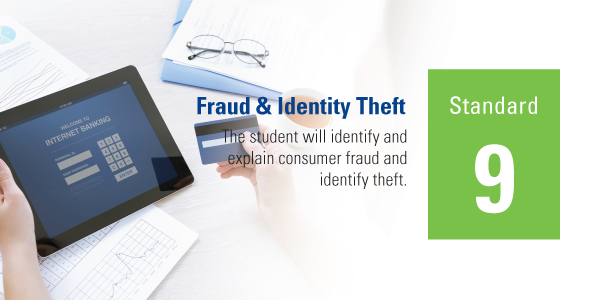PFL 9.1: Understanding and Identifying Fraud
PFL 9.2: Protecting Yourself from Fraud and Identity Theft
PFL 9.3: Responding to Fraud and Identity Theft
Full Standard Detail below
Oklahoma State Department of Education: Making $en$e: Financial Success Curriculum and Frameworks | view now
Lessons, Activities, Calculators and Videos
PFL 9.1 Analyze how consumers can become victims of deceptive practices that significantly impact their financial well-being.
A. Identify various types of consumer fraud, such as medical fraud, imposter schemes, forgery, pyramid schemes, and false billing.
B. Describe common methods used by criminals to commit fraud (e.g., bait and switch, skimming, changing address, and phishing).
C. Differentiate between consumer fraud and identity theft, including common methods used to steal one’s identity, such as dumpster diving, hacking, and social media.
PFL 9.2 Describe ways to protect yourself from identity theft and fraudulent practices (e.g., monitor monthly financial statements and annual credit reports; protect personal information and passwords).
PFL 9.3 Explain necessary responses if victimized by fraudulent business practices or identity theft (e.g., alert appropriate law enforcement agencies and credit bureaus, freeze credit histories, and change passwords).
